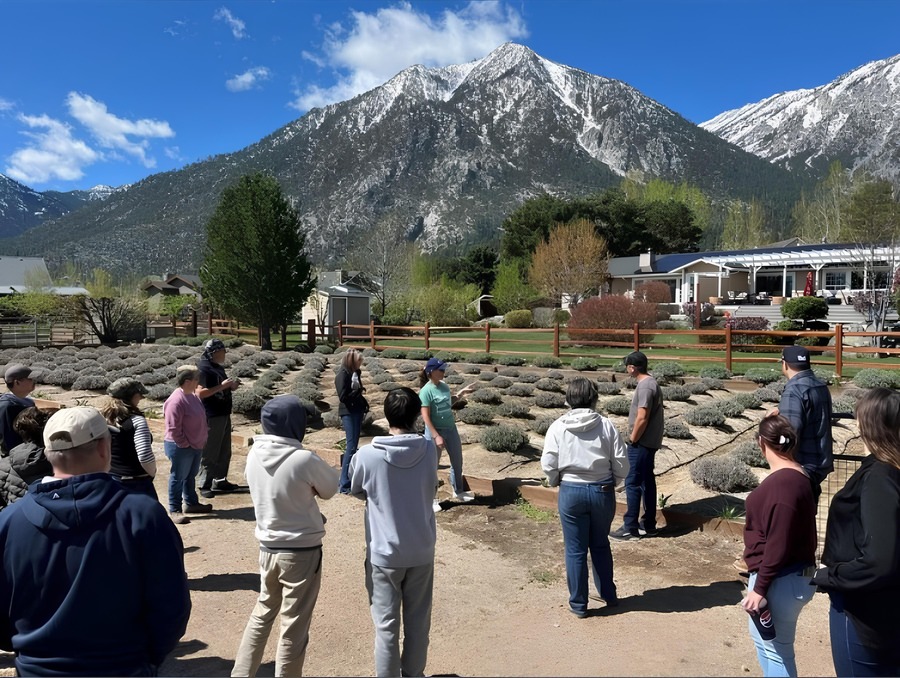“It’s a shame someone ruined the rock art in Red Rock Canyon with graffiti,” said Gary Haynes, University of Nevada, Reno professor of anthropology. “Unfortunately, vandalism like this happens all over the world.”
In Red Rock Canyon in Las Vegas, the artistic symbols painted by American Indians were destroyed when vandals spray painted over the art.
“Where my research is in Zimbabwe, they don’t have spray paint,” Haynes said. “However, vandalism still happens on rock art in Africa as people scratch over the images instead of painting over them.”
During fieldwork in Zimbabwe in southern Africa, Haynes and Teresa Wriston, doctoral student and teaching assistant for the University, discovered the noteworthy rock art. The engravings were so faint that they were hard to see from far away, but up close they were clearly engraved outlines of antelope hoof prints, predator paw prints and even human footprints.
“If you weren’t looking for it you would probably miss it,” Haynes said. “They are exceptionally well-made representations of animal footprints from dozens of different species that lived in the savanna woodlands of southern Africa, indicating across time the sorts of animal communities that also must have existed in the distant past.”
The carefully made engravings (also called petroglyphs) are known to be at least 2,300 years old. Some human handprints and footprints were also etched in the rock.
It is unusual to get a minimum date for rock-art engravings because there are so few ways to get a reliable date. Haynes said the minimum date is older than expected in southern Africa especially because the engravings are on a relatively "soft" stone (sandstone) that weathers quickly.
“This find is unusually noteworthy because the art was found in such a small number of clustered sites within a geographic region,” Haynes said. “The region is much better known for having thousands of multi-colored prehistoric paintings on rock walls instead of hoof print engravings.”
The rock art shows not only how people physically lived, as a hand ax or tool would show, but it shows often hidden facets of an extinct culture.
“Everyone needs implements to process food and store it, but rock art can take us closer to understanding how people differentiated themselves from others,” Wriston said. “This art is important to anthropology because when compared to other rock art of the same time period it tells us how stylistic representations varied through time and space. These styles might represent past cultural groups or reflect changes in a group's worldview.”
Haynes’ fieldwork in that area began in 1982 with special attention to the rock art beginning in 2007. In 2008, his team, newly supervised by Wriston, excavated in two of the sites having engravings and recorded as many of the petroglyphs as they could. Wriston and Haynes also returned in 2009 to gather data about the possibly changing climates and environments.
“The date and the engravings tell us three interesting things about people that we might otherwise never know,” Haynes said. “One, the art is older than most archeologists have assumed it to be. Two, hunter-gatherers were expert observers of animals and plants. And three, hunter-gatherers may have abruptly stopped living in the sites and making the art not long after 2,300 years – which is about the time the region’s earliest farming communities began to establish themselves. This may indicate some sort of conflict or competitive invasion.”
The African rock-art discovery will be published later this year or early next year in several scientific journals, including a journal called Zimbabwean Prehistory. Articles on this prior research from Haynes in the region have already been published in a journal called Nyame Akuma in 2009. Some articles can be read on Haynes’s website.
Future articles are pending completion of artifact and materials analyses and will be published over the next few years.
Haynes and Wriston have presented their research findings at the Society for American Archaeology (SAA) conferences in 2009 and 2010, and will again present data at the 2011 SAA conference in Sacramento, March 30 through April 3. Haynes will also present a paper at the World Congress of the International Union for Quaternary Research in Bern, Switzerland next July.











